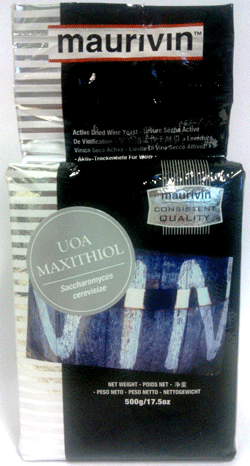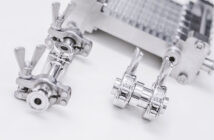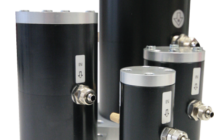By Richard C. Gardner, wine science group, University of Auckland
A new commercial strain of wine yeast has been bred at the University of Auckland and is being released commercially in New Zealand for the 2013 vintage by AB Mauri under the trade name ‘Maurivin UOA MaxiThiol’. The yeast is designed for the production of Sauvignon Blanc wines with an enhanced ‘Marlborough style’.
Historically wines were fermented using yeasts that were naturally present in grape juice. Since the 1980s, this process of ‘natural fermentation’ has been largely superseded by the addition of dried yeast strains that are designed specifically for the purpose.
Today over 100 different yeast strains are sold commercially for wine fermentation, and the vast majority of commercially made wines are fermented using these strains. Different yeast strains are suitable for different grape varieties or different wine styles, and have been either selected from wineries or are bred specifically for the purpose.
The Gardner laboratory at the University of Auckland has been involved in Sauvignon Blanc research for the past nine years. As part of this research we have undertaken a yeast breeding programme aimed at developing new strains suitable for making Sauvignon Blanc in the intense, fruit-driven ‘Marlborough’ style that has wowed the world and made Oyster Bay Sauvignon Blanc the top-selling wine in both the Australian and UK markets.
The focus of the yeast breeding programme has been on two key factors: cold tolerance and aroma production. New Zealand Sauvignon Blanc is fermented at cool temperatures (12-15°C), which is well below the normal comfort zone for most strains of the wine fermentation yeast Saccharomyces cerevisiae. Our breeding programme has involved several generations of crossing and selection at low temperatures (from 18°C down to 10°C). In later generations of crossing, we also selected for rapid growth in low nutrient grape juice and in the presence of sulphite. From this pool, a new yeast strain has been selected that ferments strongly at cool temperatures and that produces wine with strong, fruit-driven aromas.
To improve aroma production by the strain, we have used standard backcrossing procedures to introduce additional genes using a non-GMO breeding method. Two key aroma traits have been introduced by backcrossing: (a) Varietal thiol production – New Zealand wine researchers have shown that three sulphur-containing compounds (‘varietal thiols’) are critical for the fruity aroma of New Zealand ‘savvies’ – 3MH (grapefruit), 3MHA (passion fruit) and 4MMP (blackcurrant). Students in our group have discovered that a novel version of a yeast gene called IRC7 can give elevated production of these thiols in wine, especially 4MMP. Commercial trials undertaken in nine NZ wineries in 2012 confirmed that wines made with the new yeast strain contain high 4MMP, with concentrations ranging from 31 to 151 μg/L (38-fold to 188-fold above the sensory threshold).
(b) Pof-minus aroma – Some yeast strains produce undesirable ‘phenolic off-flavours’ from compounds found in grape skins (like) 4-vinylguaiacol (4VG), which has a clove-like aroma. The yeast PAD1 gene is vital for this conversion and variants of the gene have been identified that do not make the 4VG compounds. One such Pof-minus allele of PAD1 was backcrossed into our cold-adapted strain. In commercial trials of the new strain, the production of phenolic off-flavours was reduced by at least 20-fold, to a concentration well below the sensory threshold.
The results of a sensory tasting of Sauvignon Blanc wines from 2012 commercial trials with the new cold-adapted strain are shown in Figure 1. The aroma profile of Maurivin UOA MaxiThiol shows good balance, with strong aromas of passion fruit as expected, but is also high in tropical fruit, stone fruit and fresh fruit salad. While the new yeast strain has been trialled primarily in Sauvignon Blanc, the balanced fruit aroma profile should be eminently suited to other white varieties such as Chardonnay, Chenin Blanc, Colombard and Semillon.
Maurivin UOA MaxiThiol is available through Fruitfed Supplies (NZ) and Redox (Australia).
Ian Walsh
AB Mauri





























































































